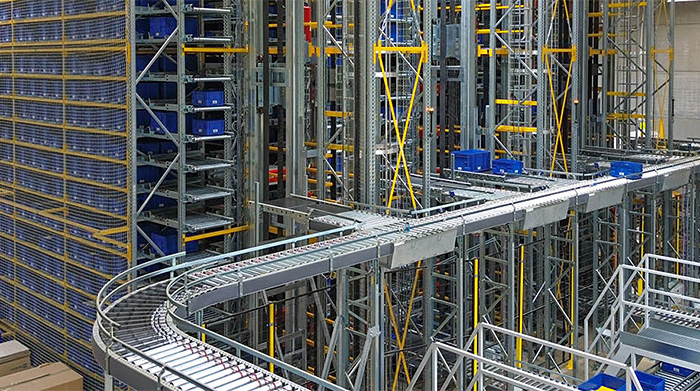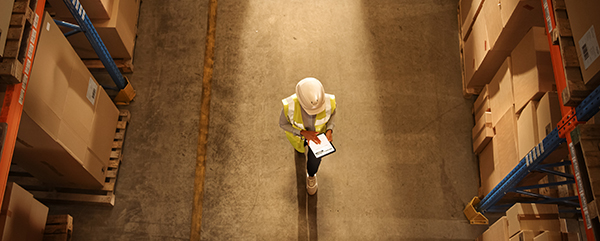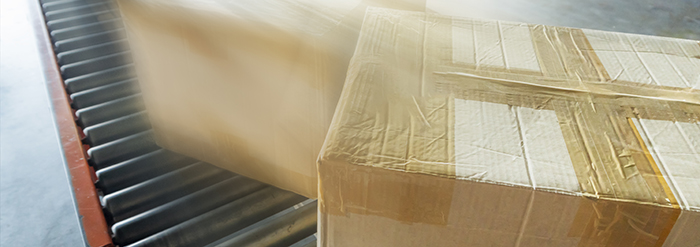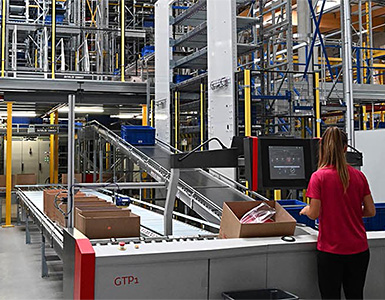When is an ASRS System a Good Fit?
What are the points where you should consider automated storage and retrieval systems

Automated storage and retrieval systems are becoming more commonly deployed in today’s modern distribution, manufacturing and warehousing facilities because they make more sense than ever in an age of escalating demand and declining labor availability. Is space tight? What are the error rates throughout fulfillment? What kind of space issues do you see moving forward? What are the safety and ergonomic concerns?
When does this level of automation make sense?
Often, companies are operating efficiently with manual or semi-automated systems–and can continue that way–but have ongoing issues or pain points. The operation is functional, but is it optimized? Are there chronic issues, or a group of them that hinder your efficiency? Let’s look at some of the signs that you may want to explore automation.
1: When you’re always shorthanded

Everyone is coming to grips with the new normal: labor is scarce, and it’s becoming more scarce every year. If you can’t fill orders today because you can’t staff picking, packing and other positions, you won’t be able to fill those orders next year — or five years. By 2028, the United States labor market will shrink by an unprecedented 6 million workers. Manual processes will become increasingly expensive and difficult to maintain.
Even if you can find employees, throwing labor at the issues isn’t a long-term solution because the workforce is shrinking every year. The key is to make the workers you have more efficient. When you evaluate your labor systems, consider productivity by task (lines or units per hour or shift) as well as annual labor costs as you consider solutions
How automation helps
The core of automation is to transform manual processes into machine-driven ones. Various automated technologies approach labor savings from different angles, but all of them are fundamentally designed to let you operate with fewer touch points, interactions and personnel.
ASRS systems use about one-third of the people needed to pick orders. Carousels, pick-to-light, robotics and other systems all approach the issue from different angle, but all allow you to function in this difficult labor environment. Look at your yearly labor costs, including benefits, the cost of training, benefits and other related costs when you consider automation. How much of that cost do you need to reduce to justify automation? How much does that labor cost per task or function?
Read more: In a fluid workforce, worker productivity hinges on simplicity and rigid processes
 2: When you’re plagued by order picking errors
2: When you’re plagued by order picking errors
People notice picking problems before any other kind, but they could be more of a symptom than the root cause.
The reason you notice picking errors earlier is because they’re often the tip of a huge iceberg, fed by a variety of upstream processes. No matter what the root causes, picking errors must be addressed because it impacts everything else: customers, returns, inventory
Systematic errors must be identified and traced to their root causes.
How automation helps
Automated systems reduce many of the reasons for error at the point of picking, but also reduce the downstream issues. If something like replenishment is a root cause of your picking error, an AS/RS system or carousel tends to make those processes more efficient. If the issue is due to human error or lack of available labor, automated systems allow you to focus training and quality resources on fewer people, resulting in accuracy and quality improvements. Systems such as pick-to-light can dramatically reduce errors.
3: When throughput is slow and difficult to improve
When order cut-off time comes and you’re always behind, it’s time to consider automated solutions.
You can increase throughput by throwing people at the problem, assuming you have the picking positions, inventory control and infrastructure available–which today’s labor environment makes a challenge Even if you can adequately staff and supply it, more people may be the most expensive and difficult option. Many companies who could use second or third shifts simply can’t fill them. And if you have them, can you process everything they do downstream? Will more people actually operate faster?

Remember that throughput can be affected by any number of upstream factors. Search times are critical because they are often a prime reason for lower throughput. If workers must search, scan and find the right items, they’ll be slower and less effective.
How automation helps
One of the strongest cases for ASRS is its speed. Theses systems are always faster than manual or semi-automated alternatives and will help you dictate product flow throughout the operation. This ability to dictate the pace is a critical advantage for automated operations. ASRS helps manage your inventory so you’ll have real-time information on what’s in stock, in what quantities and where.
Questions to ask: How many pallets or cases can your current system process over a year? How many could an automated system? What are the relevant costs and ROI projections? Start with the big picture and work your way towards more granular information. How many cartons or pallets SKU could you process over a year? Over any longer period you project?

Above: worker accessing a mini-load picking system
4: When replenishment is a constant struggle
When you spend just as much time restocking your storage and picking positions as you do picking them, replenishment becomes a front-and-center issues that must be addressed. You should be able to replenish much faster than you pick and place.
How automation helps
Because you can stock and replenish inventory at picking points, ASRS systems allow you to execute it much faster and in more flexible timeframes. If you’re restocking static shelves, racks or carton flow, you’ll either need replenishment aisles or a timeframe outside picking hours. Carousels, unit-load and mini-load ASRS systems make this activity much faster and easier than in any manual configuration.

5: When you’re squeezed for space
Space is expensive, but the opportunity costs for poor space utilization are outrageous.
Spreading storage positions creates more demand to transport either the product or for order pickers to move to storage positions, or both. Pickers who spend time walking from position to position to position can spend more time walking than they do picking. That inefficiency alone could be more expensive than the cost per square foot. When that picker arrives at the storage bin, they may then have to orient themselves and search for a particular SKU.
Any space saved is space you can use for profitable functions. When evaluating ASRS, consider not only the cost per square foot of moving or building a new facility, but the productivity of the space in your current operation. Include energy, purchase/leasing costs, utilities, taxes and other costs of ownership
How automation helps
ASRS systems deliver dense storage and increase organization better than most any alternative. These systems eliminate space used for aisles and walkways typical in manual systems and replace them with narrow or no aisles at all, depending on the system design. They make efficient use of the vertical cube as well to pack more into less space. Workers spend little time working and even less searching for inventory. Organization and inventory management are built in.
Other factors to consider
- When you have too much product damage: Items that are handled less are damaged less often. AS/RS reduces manual handling and the chances of product damage.
- When forklift-pedestrian injuries are too common: Automated systems reduce the number of forklifts by handling pallets in a concentrated footprint that lets you reduce the number of places people and forklifts mingle.
- When plant ergonomics create problems: AS/RS contributes to a safer operation that requires far less manual material handling, bending, and stretching.
- When inventory security is important: Increased organization, access control and inventory accuracy all contribute to a more secure operation and less pilferage.
Tags: ROI, Order Picking & Fulfillment, ecommerce
Scott Stone is Cisco-Eagle's Vice President of Marketing with 35 years of experience in material handling, warehousing and industrial operations. His work is published in multiple industry journals an websites on a variety of warehousing topics. He writes about automation, warehousing, safety, manufacturing and other areas of concern for industrial operations and those who operate them.



